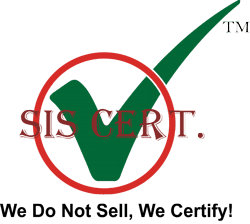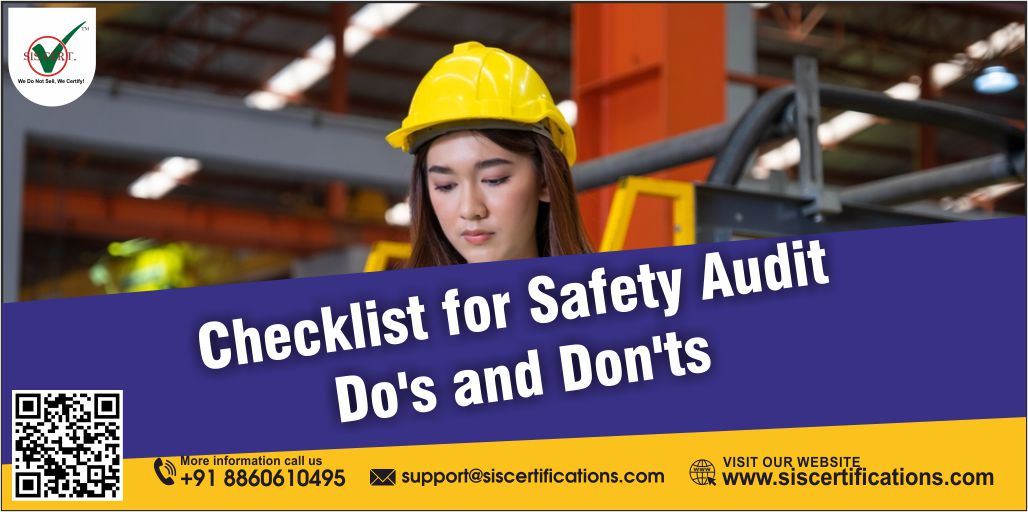A safety audit is a valuable tool used by all organizations regardless of size, nature and location. A safety audit is significant for organizations and employees and is conducted by a third party to measure the organization’s ISO 45001 Certification compliance.
What is a Safety Audit?
A safety audit provides a systematic process for an organization to gather information related to the organization’s effectiveness, efficiency, safety and reliability. It focuses on identifying the health and safety hazards and measures the effectiveness of control implemented by the organization. It evaluates and oversees compliance with Occupational Health and Safety Management System. Safety audits are complex and review documents, processes and safety management systems to measure compliance with ISO 45001. An auditor oversees the process, work environment, equipment and other related factors of the health and safety system.
Objectives of safety audit – The four main objectives of a safety audit are:
- Focuses on identifying work-related hazards and implementing appropriate controls to eliminate them to make workplaces safe and healthy.
- Oversees the effectiveness and compliance with safety programs implemented by the organization.
- Ensures that an organization adopts the best business practices and processes and that the facility, equipment and operations meet safety requirements.
- Measures and mandates organizations to adopt adequate record-keeping practices.
Phases of Safety Audits⮯
The Safety Audit consists of six phases. These are:
- Safety Audit Preparation
- Facts Finding
- Reviewing the Findings of the Safety Audit
- Recommendations from the Safety Audit
- Undertaking Corrective Actions
- Publishing the Results of the Safety Audit
Purpose of a Safety Audit ⮯
Around 1.7 million workers suffer from work-related ill health and accidents. ISO 45001 standard aims to provide a safe and healthy workplace to workers and ensure their mental and physical well-being. The purpose of safety audits is as follows:
- Preventing work-related incidents and accidents – ISO 45001 certification mandates an organization to conduct periodic health and safety audits to measure the effectiveness and efficiency of processes and reduce work-related accidents and diseases. A safety audit inspects the condition of the workplace to reduce the incidents of slips, trips and falls, manhandling and other issues related to safety.
- Measures Compliance – It measures the organization’s compliance with ISO 45001 standards and requirements. A safety audit ensures that an organization complies with all the requirements listed in clauses 4-10 and provides necessary training and tools to employees to attain occupational health and safety.
- Protects organization’s reputation and brand name – Non-conformities with health and safety laws and regulations can result in heavy fines/penalties and imprisonment. A safety audit oversees the organization’s compliance with all the health and safety laws and standards. It allows an organization to avoid regulations, protects its brand name and creates a better reputation of the organization.
- Enhance the productivity of employees – It creates a positive safety culture within the organization and demonstrates its commitment to secure employee’s safety and well-being. It boosts employee’s confidence and trust as it reduces work-related injuries, accidents and diseases and enhances productivity.
Do’s of a Safety Audit⮯
An organization requires ensuring the following things during a safety audit:
- An organization should ensure a positive work environment to boost employee morale and productivity.
- Collaborating with a competent health and safety auditing company having credentials and experience. Conducting audits can be time-consuming and require adequate training.
- It is necessary for an organization to build and customize an accurate Safety Audits CheckList based on the organization’s needs and requirements.
- Formulating appropriate and clear corrective action plans and documenting them. ISO 45001 Certification follows a risk-based approach to identify health and safety risks and requires developing policies and plans to eliminate them.
- The organization must train and empower its employees so that they would be able to perform the particular job efficiently and reduce the chances of work-related injuries and diseases.
- An organization must conduct periodic internal audits to check ISO 45001 Certification compliance and meet the requirements of OH&SMS.
Don’ts of a Safety Audit⮯
An organization should not promote the following things during a safety audit:
- Restricting site inspections to only some parts of the workplaces.
- Limiting the organization’s discussions to only some members of the workforce.
- Not allowing permission to interview employees in private.
- Manipulating the auditor to review and evaluate only those records and documents that would appear to have already been vetted.
- Discouraging the auditor from evaluating records and documents randomly from electronic or hardcopy files and presenting folders of prepared evidence only.
- Trying to hide electronic folders or files from the auditor.
Type of Safety Audits⮯
- Fire Safety Audits
- Electrical Safety Audits
- Health And Safety Audits
- Road Safety Audits
Conclusion ✅
ISO 45001 Certification specifies the requirements for Occupational Health and Safety Management System OHSMS standard. It also mandates an organization to conduct periodic safety audits to ensure compliance with OHSMS. A safety audit reviews and evaluates an organization’s health and safety system to identify safety hazards and work-related risks. It aims to create a safe and healthy workplace for employees and reduces work-related injuries, incidents and diseases.




